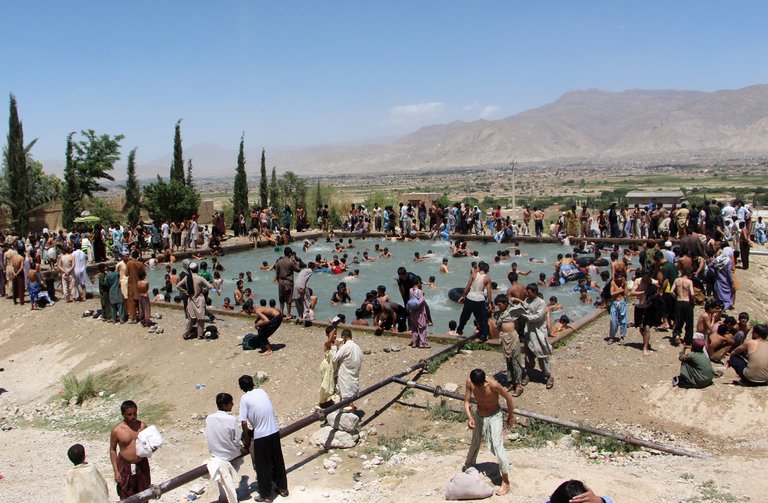Refrigerators stopped working during that May scorcher, as did ice factories.
“It got so hot that people here said that there is no difference between Turbat and hell,” Noroz Bin Shabir, a student from the town, said by telephone. “It was like a fire was burning outside.”
The temperature in Turbat prompted discussions on social media and among extreme-weather experts about whether an Asian record had really been reached.
Had meteorologists in Pakistan rounded up the reading by 0.5 degree Celsius (0.9 degree Fahrenheit), some observers asked, to an Asian record of 54 degrees Celsius, and would that adjustment prevent history from being made?
Randall S. Cerveny, the rapporteur on weather and climate extremes for the World Meteorological Organization, a United Nations agency, later said it was unclear if any rounding had been done. He added that the 129.2-degree measurement, if confirmed, and an identical one from Kuwait last summer, would be the third-highest ever recorded on the planet behind 134 degrees at Furnace Creek, in Death Valley, Calif., in 1913 and 131 degrees in Kebili, Tunisia, in 1931.
The attention paid to the temperature reading in Pakistan highlights how interest in heat records is growing across Asia alongside rising awareness of climate change. Scientists have documented a rise of heat extremes in many parts of the world, and they say the trend is consistent with what they expect on a planet that is warming because of human emissions of greenhouse gases.
“A record is an absolute thing, so it’s not just a little bit better or a little bit warmer or the average has increased by X degrees,” said Susanne Becken, a professor at Griffith University in Australia who studies how people seek information about climate change.
As heat records accumulate, “people get more and more convinced that climate change is happening,” Professor Becken said.
A recent blast of epically hot weather across vast regions of Asia has underscored how extreme heat can severely disrupt daily life, especially in poor countries at low latitudes — a problem that scientists say will worsen as the effects of climate change become more apparent.
Sixteen of the 17 hottest years ever recorded have occurred since 2000, scientists say, and 2016 was both the hottest since modern record-keeping began in the 19th century and the third consecutive record-breaking year.
The heat is pushing people around the world toward the limits of what climatologists call “thermal comfort,” with complex implications for public health and food security.
When a record temperature is announced, “people start asking questions about their life and their future,” said Omar Baddour, a senior scientist at the World Meteorological Organization in Geneva.
The effects have been especially dramatic in India, where officials said that more than 2,400 people, mostly laborers and farmhands, died from heat-related illnesses in 2015, the year of a severe heat wave there. That episode, one of four in India since 1998 that each killed more than 1,000 people, ranks as the fifth-deadliest heat wave in history, said Jeff Masters, the meteorology director at the online weather service Weather Underground.
The Indian government created a national prevention and management response plan for heat waves, but experts say that extreme heat in India and beyond still poses disproportionately high risks for the poor. A study found, for example, that when a deadly 2015 heat wave swept through Karachi, Pakistan, residents with limited education and monthly incomes of less than $196 faced a significantly higher risk of death.
Unskilled laborers “don’t have the luxury of taking the afternoon off work, so they’ll cool off under a tree for a bit but keep returning to work,” said Shravan Jha, a team manager for the Agriculture Department in Bihar, a province in India’s northeast. “There is lots of poverty here, and let’s say a construction worker takes the day off: How will he feed his kids?”
Another recent hot spot for heat records is Southeast Asia, where monthly mean temperatures in April 2016 were the highest since record-keeping began there in the mid-20th century, a study in the scientific journal Nature Communications reported this month. The heat disrupted crop production, caused a spike in energy use and “imposed societal distress,” the study said.
Extreme heat has returned again this spring, with temperatures in some parts of Southeast Asia and the Indian subcontinent pushing 104 degrees for days on end, often in tandem with shirt-soaking humidity.
“Too much concrete, fewer lakes than we used to have, and all the air-conditioners raise the temperature,” said Nguyen Ngoc Huy, a climate change expert in Hanoi, Vietnam, with ISET-International, a nonprofit research group working on disaster risk management in Asia.
For decades, the highest temperature ever recorded was believed to be a 136.4-degree reading in 1922 from what is now Libya. But in 2012, the World Meteorological Organization rejected it, in part because of what a study described as “potentially problematical instrumentation.” This transferred the record to the 134 degrees recorded in Death Valley more than 100 years ago.
Temperatures at the absolute extreme end of the scale are still rare because they are created by highly unusual atmospheric conditions, Mr. Baddour said, but the odds that Furnace Creek’s record will be broken are growing as the planet warms.
“The next record will be very amazing,” he said. “If it happens.”
Source: The New York Times | 17 June 2017














